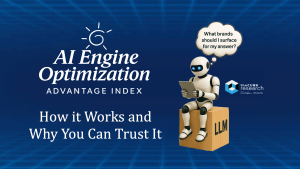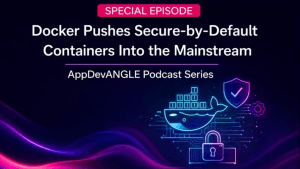When it’s come to software, for years, CIOs have had to make a critical determination:
- Is there an existing product on the market that can meet the identified business need?
- Is there an existing product on the market that I can customize to meet my need?
- Do I have to develop software to meet the identified business need?
In other words, there has been a constant build vs. buy decision being made. In general, people favor a path of least resistance in these kinds of decisions, so, whenever possible, buying an “off the shelf” tool is generally the preferred option. Over time, the first two options have crowded out the third as solution providers create new and compelling services intended to fill customer desires. Sure, in some cases, there are unique needs that require ground-up software development efforts, but more often than not, it’s possible to simply customize an existing product to meet business needs.
In continuing this look at software development, it’s also not uncommon for organizations to purchase an existing product and then extend its capabilities through integrations or custom add-ons. In this way, organizations can get the best of both worlds; buy the core product to meet the most critical needs and then worry about custom development only for those items that are the most critical.
Why do organizations try to avoid custom development when possible? First, custom development is tough work. It requires exacting specifications, specialized programming skill sets, and the development time is a significant expense to the organization. In addition, the ongoing maintenance of the custom coding can be challenging, particular as staff turns over and code becomes outdated.
Of course, if there is a sufficient return, an organization will make the effort. Sometimes, customization is worth the additional expenditure as there could be the potential for great returns.
This build vs. buy decision is exercised constantly by CIOs as new software needs arise. Today, though, this decision is being exercised with regard to hardware buys, a trend that will accelerate as new services and infrastructure continue to be brought to market. It wasn’t that long ago when CIOs all but defaulted to a build decision when it came to data center infrastructure. Today, though, things are changing.
First, even the term “data center infrastructure” itself should be considered legacy as new options hit the market and enable CIOs to instead focus on “business technology platforms.” Such platform options may include traditional data center infrastructure, but will increasingly consist of a mix of cloud-based applications and hybrid cloud services as well.
In considering these options, the parallels with traditional software procurement become clear and forms a spectrum of decision-making opportunity. All the way at one side exist a pure built environment which would be akin to developing a brand new application from the ground up. In this scenario, buyers piece together the entire data center component by component and perform their own compatibility and interoperability testing to make sure that everything works the way it should.
At the other end of the spectrum lies pure cloud-based infrastructure, which equates to a “buy” decision in one direction. Most organizations will lie at some point in the middle of the spectrum where there are a number of waypoints. These waypoints include:
- Prebuilt, prevalidated infrastructure, such as VCE Vblock. These are a “buy” solution, but still require local hands to manage.
- Hyperconverged infrastructure such as that from Nutanix and Simplivity. This on-premises gear is much closer to the “buy” side of the house as it requires a bit less hands on IT time.
- Hybrid cloud environments in which organizations enjoy a seamless combination of on-premises and cloud based environments. The on-premises side of these environments can be legacy gear or converged or hyperconverged equipment.
It is this last option that provides organizations with the ultimate in flexibility and is akin to buying an off the shelf software package and then adding unique customizations as the need arises. Under such scenarios, organizations can buy their environment in the hybrid cloud and deploy those non-cloud services in an on-premises data center. Today, of course, the reverse is generally done, but as time goes on, expect to see more workloads shift to the cloud while on-premises data centers run those workloads deemed either too sensitive for the cloud or too unique for an existing cloud solution.
Summary
The point is that new and emerging market opportunities are shifting the build vs. buy discussion well into the realm of data center hardware and providing CIOs with the opportunity to make very granular decisions with regard to hardware just as has been done with software for ages. CIOs should embrace this opportunity to consider future data center directions and decide where to put money and where to put effort while balancing these resource decisions with other business needs and IT projects.


